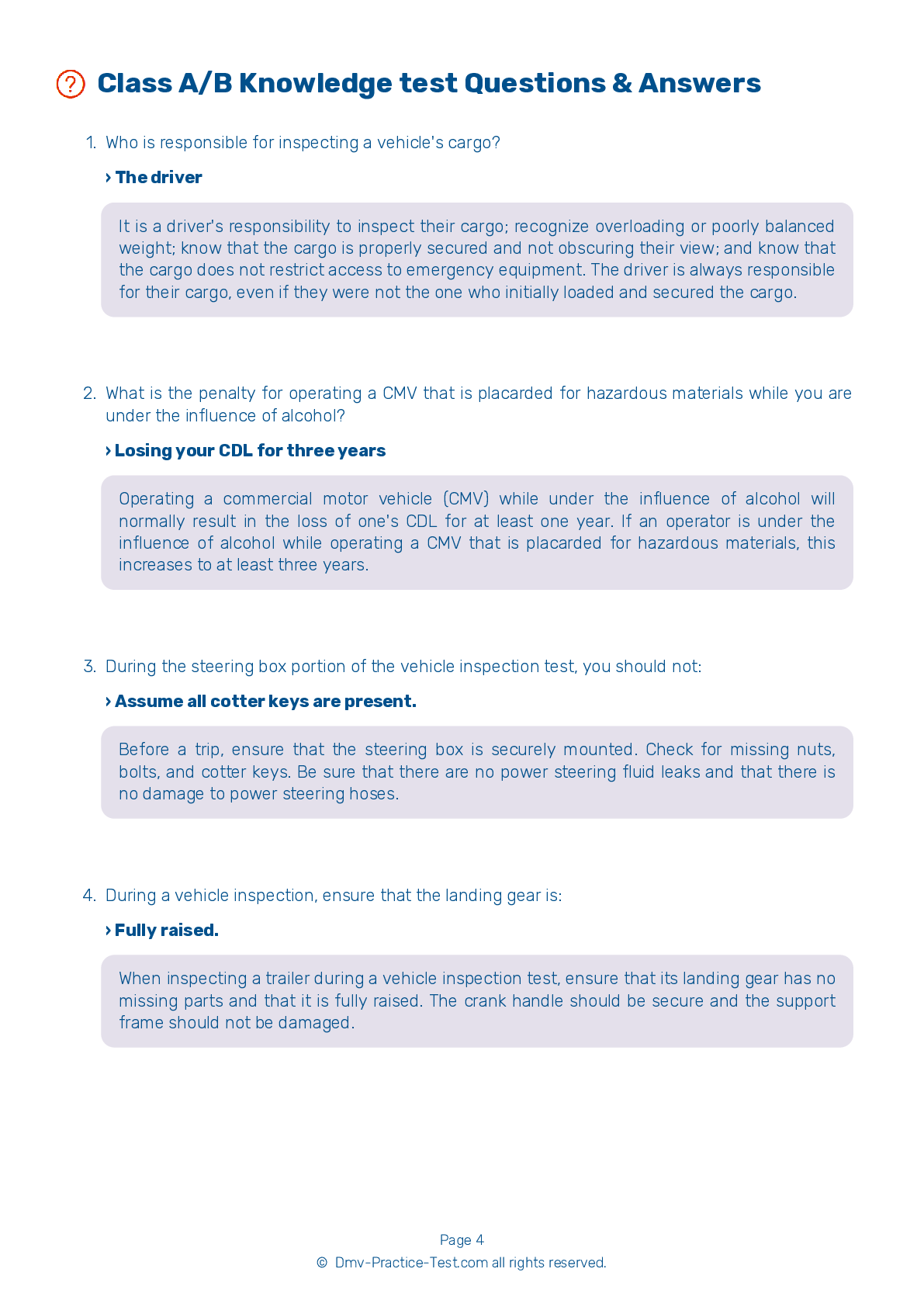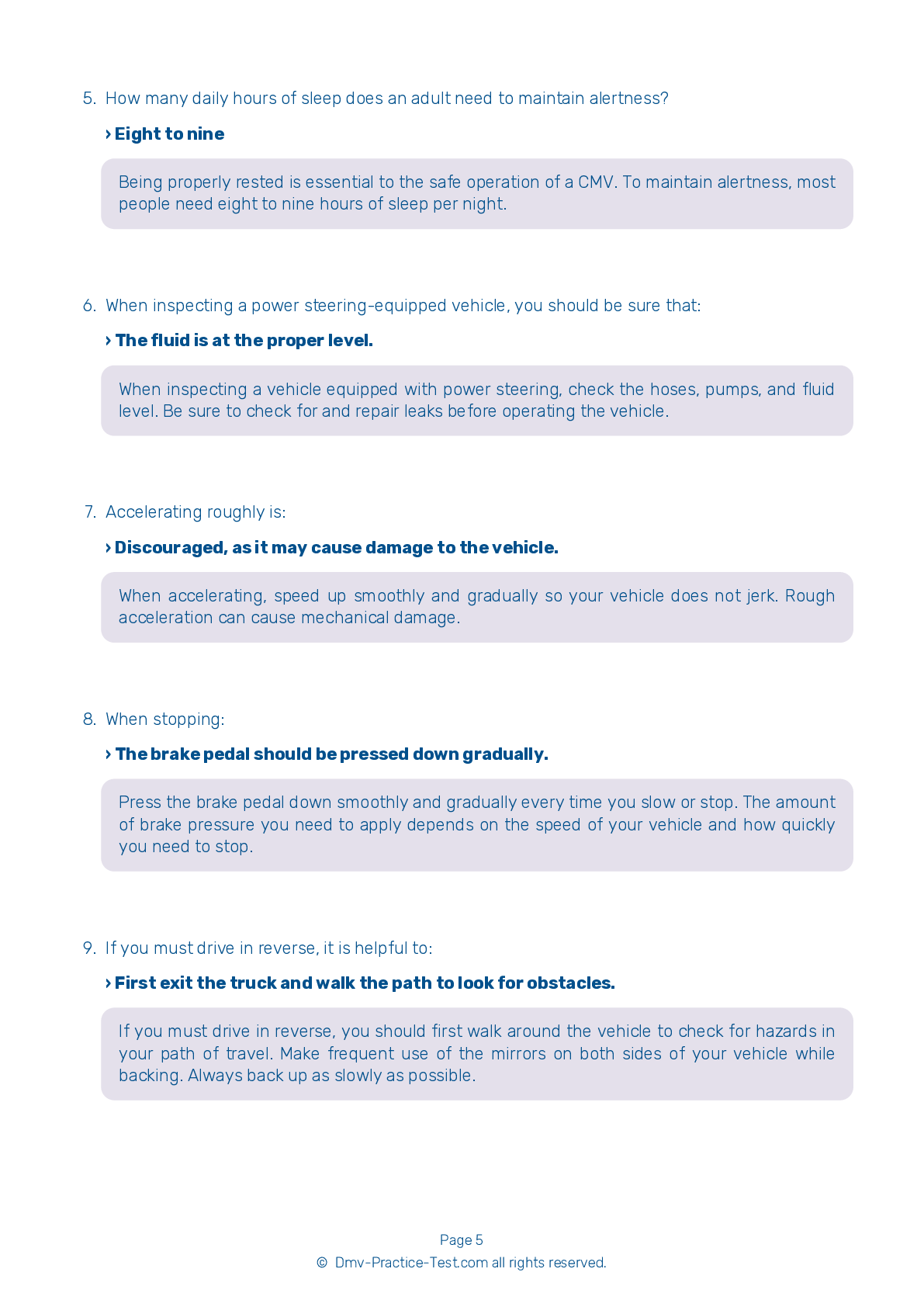FREE CDL Texas Knowledge Test Class A 2024 Page 3 of 10
Train for FREE online with our Texas class A license test. The official exam test consists of several obligatory parts, with all of them checking your knowledge of different blocks of road rules. If you need to obtain a TX CDL class A permit in 2024, practice as much as possible. Free sample tests published on our website will help you check and improve your knowledge and boost your grades. Please bear in mind that CDL class A requirements may vary from state to state.
If you wish to get a Commercial Driver's License in Texas, you'll need to pass the knowledge examinations that pertain to your specific type of vehicle. There are a variety of assessments, but all applicants must pass the general knowledge test with a score of at least 80%. The 70 questions below are all taken from the most recent Texas Department of Public Safety guidebook. Good luck and drive safely!
Ideal for:
- CDL holders who want to add endorsements to their license
- First-time TX CDL and CLP applicants
- Applicants for CDL renewal in TX
On the actual TX CDL exam:
- There are 50 questions
- To pass, you must get 40 right answers
- 80% passing score



